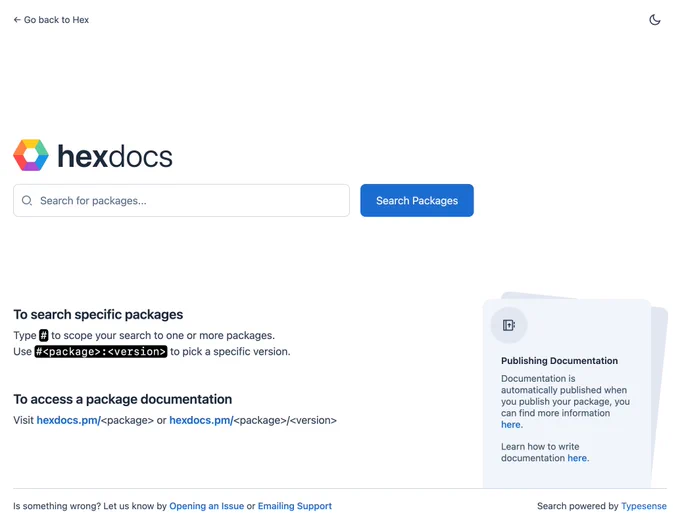Farm retweeted
here's my pitch: CLIs for DSPy
use and optimize any coding agent with the power of DSPy.
would appreciate any feedback on this idea from the @DSPyOSS peeps and especially @lateinteraction @MaximeRivest @a1zhang @LakshyAAAgrawal
(links below)
Farm retweeted
To evaluate DRAMA-Bot and existing AI agents, we built DRAMA-Bench, a benchmark with 200 real-world analytical tasks derived from public reports and datasets. Tasks span claim verification and question answering over open-domain data.
6/8
Farm retweeted
We introduce DRAMA as a unified pipeline that integrates data collection, transformation, and analysis to support real-world, end-to-end data science workflows.
4/8
Farm retweeted
Awesome LLM Apps is about to cross 75,000 stars 🤯
If you are learning or building AI Agents, RAG, LLM apps - it is a free resource just for you.
Open-source and community-driven is the way to go.
GitHub: github.com/Shubhamsaboo/awes…
Farm retweeted
Thank you for your vote. When you learn Chinese focus on the words, yes sir thank you sir. Make sure you say it fast and with a bow.
Farm retweeted
Thanks for asking. I think the most important thing is to understand everything you possibly can about AI and robotics. Don’t just know it academically live in it. I don’t wanna be harsh, but frankly, I don’t know of any profession that won’t be touched by what I know is coming. And as I’m making the point of this post, the WEST does not get its act together and fast and stop playing political games of team agendas. All I just said, may not matter other than learning to speak Mandarin Chinese and especially focus on saying the words yes sir, right away, sir.
Farm retweeted
We just released our complete guide to Context Engineering.
(These 6 components are the future of production AI apps)
Every developer hits the same wall when building with Large Language Models: the model is brilliant but fundamentally disconnected. It can't access your private documents, has no memory of past conversations, and is limited by its context window.
The solution isn't better prompts. It's 𝗖𝗼𝗻𝘁𝗲𝘅𝘁 𝗘𝗻𝗴𝗶𝗻𝗲𝗲𝗿𝗶𝗻𝗴 - the discipline of architecting systems that feed LLMs the right information in the right way at the right time.
Our new ebook is the blueprint for building production-ready AI applications through 6 core components:
1️⃣ 𝗔𝗴𝗲𝗻𝘁𝘀: The decision-making brain that orchestrates information flow and adapts strategies dynamically
2️⃣ 𝗤𝘂𝗲𝗿𝘆 𝗔𝘂𝗴𝗺𝗲𝗻𝘁𝗮𝘁𝗶𝗼𝗻: Techniques for transforming messy user requests into precise, machine-readable intent through rewriting, expansion, and decomposition
3️⃣ 𝗥𝗲𝘁𝗿𝗶𝗲𝘃𝗮𝗹: Strategies for chunking and retrieving the perfect piece of information from your knowledge base (semantic chunking, late chunking, hierarchical approaches)
4️⃣ 𝗣𝗿𝗼𝗺𝗽𝘁𝗶𝗻𝗴 𝗧𝗲𝗰𝗵𝗻𝗶𝗾𝘂𝗲𝘀: From Chain of Thought to ReAct frameworks - how to guide model reasoning effectively
5️⃣ 𝗠𝗲𝗺𝗼𝗿𝘆: Architecting short-term and long-term memory systems that give your application a sense of history and the ability to learn
6️⃣ 𝗧𝗼𝗼𝗹𝘀: Connecting LLMs to the outside world through function calling, the Model Context Protocol (MCP), and composable architectures
We're not just teaching you to prompt a model - we're showing you how to architect the entire context system around it. This is what is going to take AI from demo status to actual useful production applications.
Each section includes practical examples, implementation guidance, and real-world frameworks you can use today.
Download it here: weaviate.io/ebooks/the-conte…
Farm retweeted
Using LangCache for Building Agents.
And no, it's not from LangChain. It’s from Redis, built for production-scale memory and recall.
LangChain’s in-built caching mostly works on exact text matches. Redis LangCache, in contrast, uses semantic caching; it recalls based on meaning, not identical strings.
Here’s how it works under the hood:
>A user sends a prompt to your AI app.
>Your app sends the prompt to LangCache via: POST /v1/caches/{cacheId}/entries/search
>It calls an embedding model to generate a vector for the prompt.
>It searches the cache for a semantically similar entry using those embeddings.
>If a match is found (cache hit): LangCache returns the cached response instantly.
>If no match is found (cache miss): Your app calls the LLM, gets a new response, then stores it back via: POST /v1/caches/{cacheId}/entries
>LangCache saves the new embedding and response for future reuse.
How It Differs from LangChain Caching:
>LangChain’s built-in caches (like RedisCache or InMemoryCache) work only on exact string matches.
>RedisSemanticCache supports embeddings, but it’s self-hosted and limited in scale.
>Redis LangCache is a fully managed semantic caching service designed for production workloads.
Why it matters :
>Faster response times
>Reduced API costs
>No infrastructure management
>Language-agnostic (via REST API)
When to use it :
>AI agents, RAG systems, & chatbots
>Repetitive or similar query handling
>Production-grade reliability
>Auto-optimized embeddings
>Detailed cache monitoring
Farm retweeted
Hexdocs now offers @TypeSense-powered documentation search across all packages and versions, link below.
TL;DR:
* Run `mix hexdocs.search` to open a search tailored to your project's dependencies
* Coding agents can use tidewave.ai's MCP to search across your deps docs
* Docs for Phoenix/Ecto/etc can provide cross-dependency search, improving onboarding
This looks useful.
fly.io/blog/gossip-glomers/
Happy Friday!
I spent some time solving @flydotio's "Gossip Glomers" distributed systems challenges in #ElixirLang: github.com/Nezteb/gossip_glo…
The code needs some cleanup, but all of the challenge tests pass! #MyElixirStatus
peeps sleeping on Elixir/Phoenix
meanwhile, enlightened junior practitioners are vibe coding real time full stack Phoenix apps that are categorically superior to your node/ts 10,000 dependency alternatives, fewer bugs, fewer LOC, faster to completion.
Also a bit different with the (presumably) durable step by step flow? I want durable stateful actors which re-init and do whatever per usual OTP stuff. You could use a state machine on top, or build a workflowy thing. I really think a durable genserver/agent is all you need to accomplish what they top-bill "framework for building apps and AI agents that can pause, resume, and maintain state.". Because all the message sending and primitives of the BEAM, throw ReqLLM/Judo/whatever on top of a durable gensever and you have all this already, without an entire framework, compiler, and what I assume is single vendor?





























